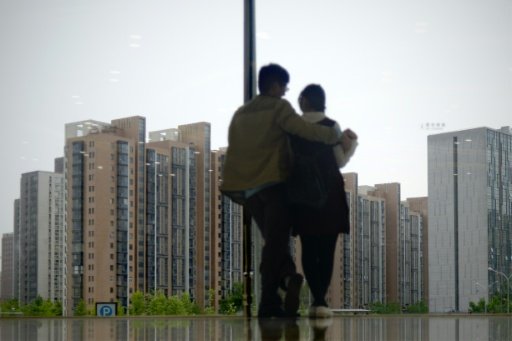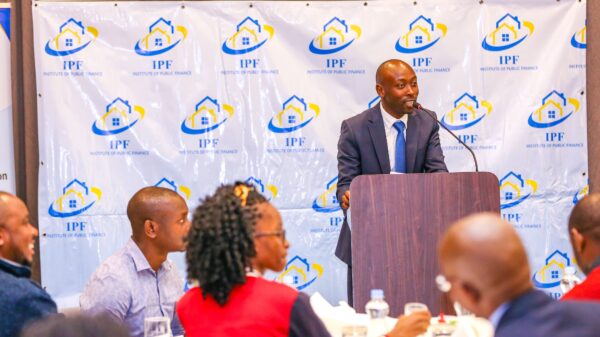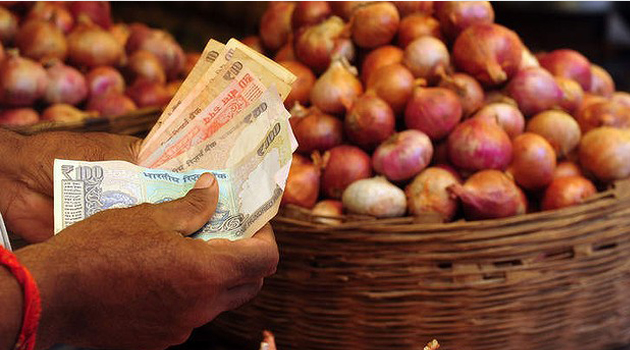
Debt owed by Chinese households in the world’s second largest economy has surged from 28 percent of GDP to more than 40 percent in the past five years
BEIJING, China, Nov 27 – Chinese household debt has risen at an “alarming” pace as property values have soared, analysts say, raising the risk that a real estate downturn could send shockwaves through the world’s second largest economy.
Loose credit and changing habits have rapidly transformed the country’s famously loan-averse consumers into enthusiastic borrowers.
Skyrocketing real estate prices in major Chinese cities in recent years have seen families’ wealth surge.
But at the same time they have fuelled a historic boom in mortgage lending, as buyers race to get on the property ladder, or invest to profit from the phenomenon.
Now the debt owed by households in the world’s second-largest economy has surged from 28 percent of GDP to more than 40 percent in the past five years.
?The notion that Chinese people do not like to borrow is clearly outdated,” said Chen Long of Gavekal Dragonomics.
The share of household loans to overall lending hit 67.5 percent in the third quarter of 2016, more than twice the share of the year before.
But this surge has raised fears that a sharp drop in property prices would cause many new loans to go bad, causing a domino effect on interest rates, exchange rates and commodity prices that “could turn out to be a global macro event,” ANZ analysts said in a recent note.
While China’s household debt ratio is still lower than advanced countries such as the US (nearly 80 percent of GDP) and Japan (more than 60 percent), it has already exceeded that of emerging markets Brazil and India, and if it keeps growing at its current pace will hit 70 percent of GDP in a few years.
The ruling Communist party has set a target of 6.5 to 7 percent economic growth for 2017, and the country is on track to hit it thanks to a property frenzy in major cities and a flood of easy credit.
But keeping loans flowing at such a pace creates such “substantial risks” that it could be a “self-defeating strategy”, Chen said.
Transferring risks
China’s total debt – including housing, financial and government sector debt — hit 168.48 trillion yuan ($25 trillion) at the end of last year, equivalent to 249 percent of national GDP, according to estimates by the Chinese Academy of Social Sciences, a top government think tank.
China is seeking to restructure its economy to make the spending power of its nearly 1.4 billion people a key driver for growth, instead of massive government investment and cheap exports.
But the transition is proving painful as growth rates sit at 25-year lows and key indicators continue to come in below par, weighing on the global outlook.
Authorities “desperate” to keep GDP growth steady have turned to consumers as a source of finance because “many of the sources of capital through the banks and corporations are essentially used up”, Andrew Collier of Orient Capital Research told AFP.
Individuals have turned to pawn shops, peer-to-peer networks and other informal lenders to borrow cash against assets such as cars, art or housing, he said, to spend it on consumption.
Banks are also driving the phenomenon, Andrew Polk of Medley Global Advisors told AFP.
“Banks have been pushing people to buy houses because they need to make loans,” he said, as corporate borrowing has dried up.
Combined with a rise in peer-to-peer lending, with over 550 billion yuan borrowed in the third quarter of 2016, the risks of speculative investment have risen, S&P Global Ratings said.
Some analysts argue that China is well positioned to manage these risks, and has plenty of room to take on more leverage as families still save twice as much as they borrow, with some 58 trillion yuan in household deposits, according to Oxford Economics.
“From an overall perspective, household debt remains in a safe range,” Li Feng, assistant director of the Survey and Research Center for China Household Finance in Chengdu, told AFP, adding that risks over the next three to five years were modest.
But Collier said that credit-fuelled spending was a “risky game”, because when capital flows slow, property prices are likely to collapse, particularly in China’s smaller cities.
That could lead to defaults among property developers, small banks, and even some townships.
“That will be the beginning of a crisis,” he said. “How big this becomes is unclear but it’s going to be a difficult time for China.”


































